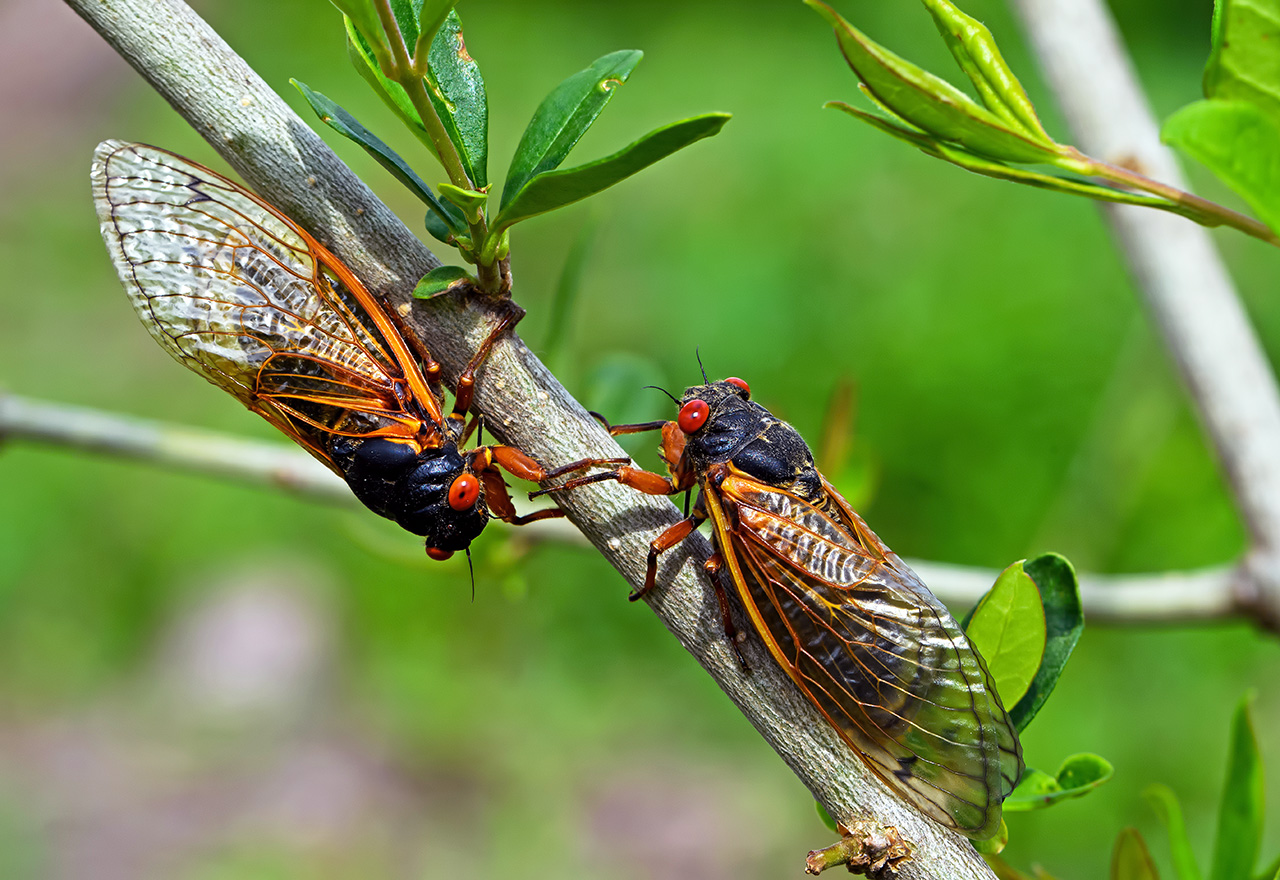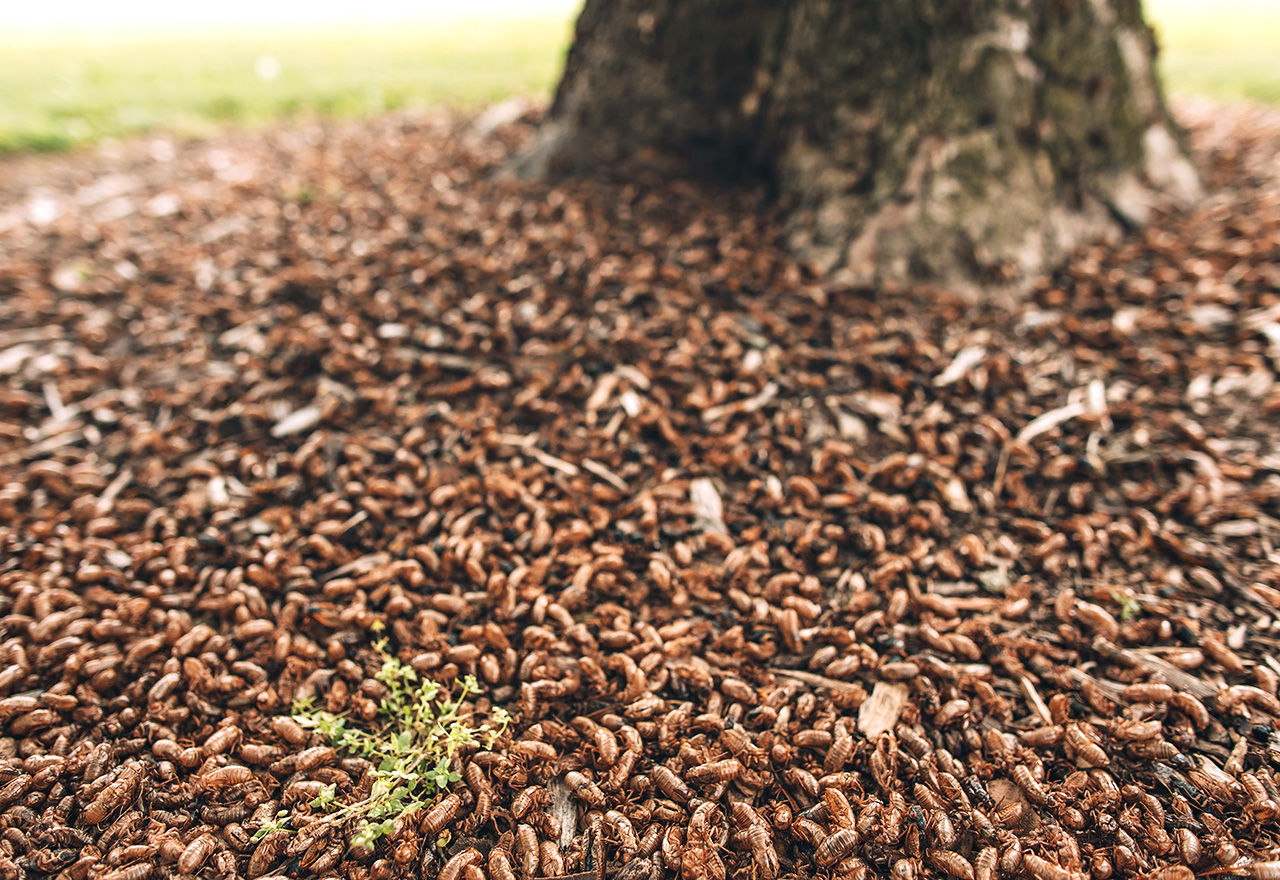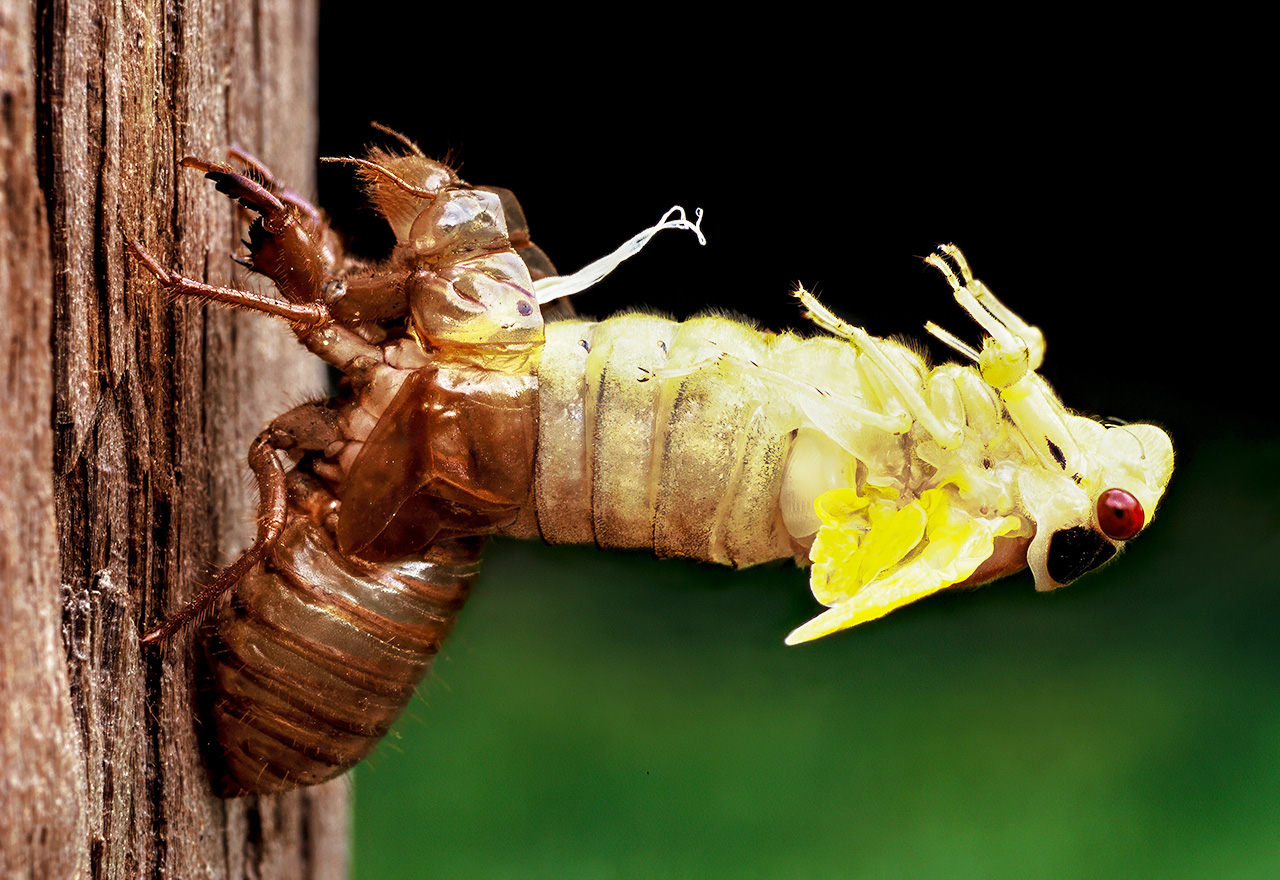Here Come the Broods: Spring and Summer 2024 to Bring Rare Double Cicada Brood Emergence
by Sophia Franchi, on March 11, 2024

Spring is full of familiar sounds: The buzzing of ground bees building early nests, the storybook mating calls of songbirds, the chirping of early spring frogs…and the relentless whistling buzz of the cicada brood.
As herbivorous insects, cicadas rely on vegetation for feeding and reproduction and can be found all over the globe in forests, woodlands, grasslands, and even some urban areas. While particularly abundant in tropical and subtropical regions, cicadas truly thrive in temperate climates. During their nymphal stage, cicadas live underground and feed on root fluids from various plants. They then emerge from the ground and spend their short adult lives in the canopies of trees, where they mate, feed, and lay eggs.
Cicadas use piercing-sucking mouthparts (stylets) to extract nutrient-rich fluids from plant tissue — primarily the sap of trees, shrubs, and other plants. This feeding behavior plays an important role in nutrient cycling within forest ecosystems and usually is not considered harmful to the overall health of mature plants and trees.

In the eastern United States, two types of cicadas commonly exist. Annual cicadas, found worldwide, typically emerge every year in smaller numbers. They have relatively short life cycles, with nymphs spending a few years underground before emerging as adults. Periodical cicadas are unique to North America and have longer life cycles. Known for their synchronized mass emergences every 13 or 17 years, periodical cicadas spend the majority of their lives underground as nymphs, before emerging en masse to breed and lay eggs.
In the Spring and Summer of 2024, North America will witness a rare event as two broods of periodical cicadas emerge simultaneously. After 17 years underground, Brood X will cover the eastern United States; Brood XXIII will emerge in select areas across the central United States after 13 years underground. Billions of cicadas will be heard buzzing around forests, parks, and suburbs. These two broods have a dual emergence together once every 221 years — the last took place in 1803.
Cicadas contribute to nutrient cycling by aerating the soil and enriching it with their excrement as they feed on plant sap. At the end of the life cycle, decomposing carcasses further enrich the soil. Cicadas also serve as a significant food source for small predators, enhancing local biodiversity. So, this cicada boom could have overall ecological advantages.

However, during times of high population density — such as a dual emergence — their egg-laying process can damage trees, leading to weakened branches. The large numbers of cicadas feeding on tree sap can stress plants, particularly young or newly planted trees. In severe cases, heavy infestations may lead to defoliation.
In lawns and gardens, cicadas may cause cosmetic damage to ornamental plants and trees, but generally do not pose a significant threat to their long-term health. Concerned homeowners might consider speaking with a landscape professional about cicada protection as part of an annual Tree & Shrub Care Program.












